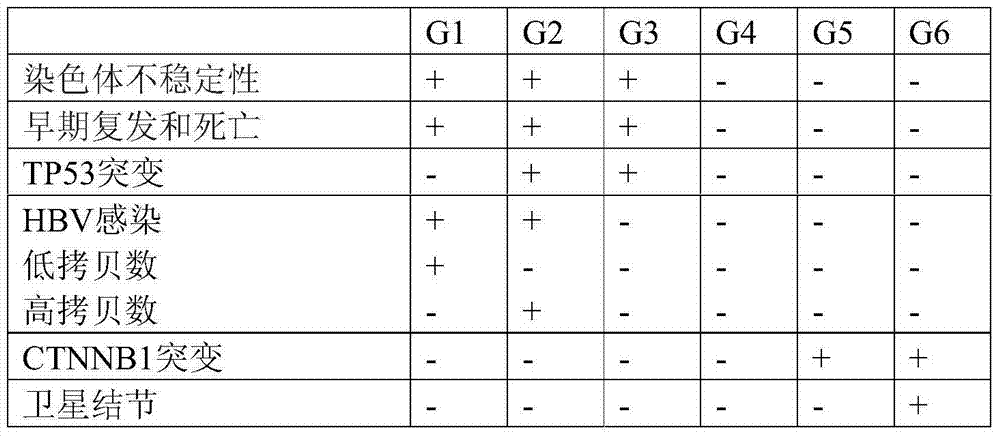A new method for classification of liver samples and diagnosis of focal nodule dysplasia, hepatocellular adenoma, and hepatocellular carcinoma
A liver cell and sample technology, applied in the field of liver disease, its classification and diagnosis, can solve the problems of liver samples that have not been publicly classified
- Summary
- Abstract
- Description
- Claims
- Application Information
AI Technical Summary
Problems solved by technology
Method used
Image
Examples
Embodiment 1
[0265] Example 1. Identification of Molecular Signatures of Liver Samples Allowing Classification of Various Types of Liver Diseases
[0266] patients and methods
[0267] Patient and Tissue Samples
[0268] Liver samples were systematically frozen after resection of tumors from the liver at two French university hospitals in Bordeaux (from 1998 to 2007) and Créteil (from 2003 to 2007). A total of 550 samples were included in this work, and the study was approved by the local IRB committees (CCPRB Paris Saint-Louis, 1997 and 2004), and all patients signed their informed consent forms according to French law. The following were excluded: (1) tumors with >80% necrosis, (2) tumors with poor or insufficient RNA quality, (3) non-curatively resected HCC: R1 or R2 resection or extrahepatic metastases at the time of surgery, ( 4) HCC treated by liver transplantation.
[0269] Thus, the following samples are included:
[0270] 40 non-hepatocellular tumors, including intrahepatic ch...
PUM
 Login to View More
Login to View More Abstract
Description
Claims
Application Information
 Login to View More
Login to View More - R&D
- Intellectual Property
- Life Sciences
- Materials
- Tech Scout
- Unparalleled Data Quality
- Higher Quality Content
- 60% Fewer Hallucinations
Browse by: Latest US Patents, China's latest patents, Technical Efficacy Thesaurus, Application Domain, Technology Topic, Popular Technical Reports.
© 2025 PatSnap. All rights reserved.Legal|Privacy policy|Modern Slavery Act Transparency Statement|Sitemap|About US| Contact US: help@patsnap.com



